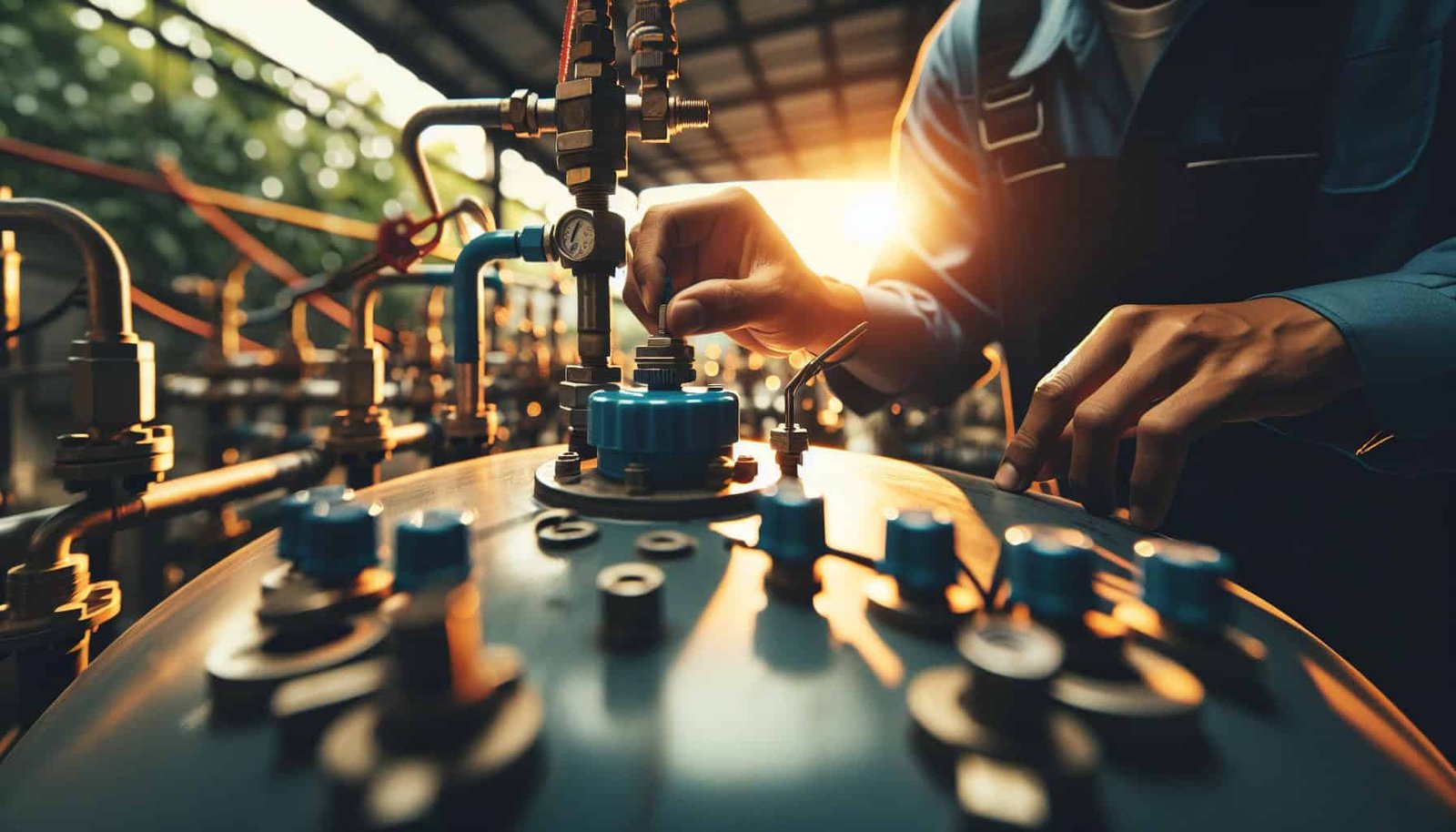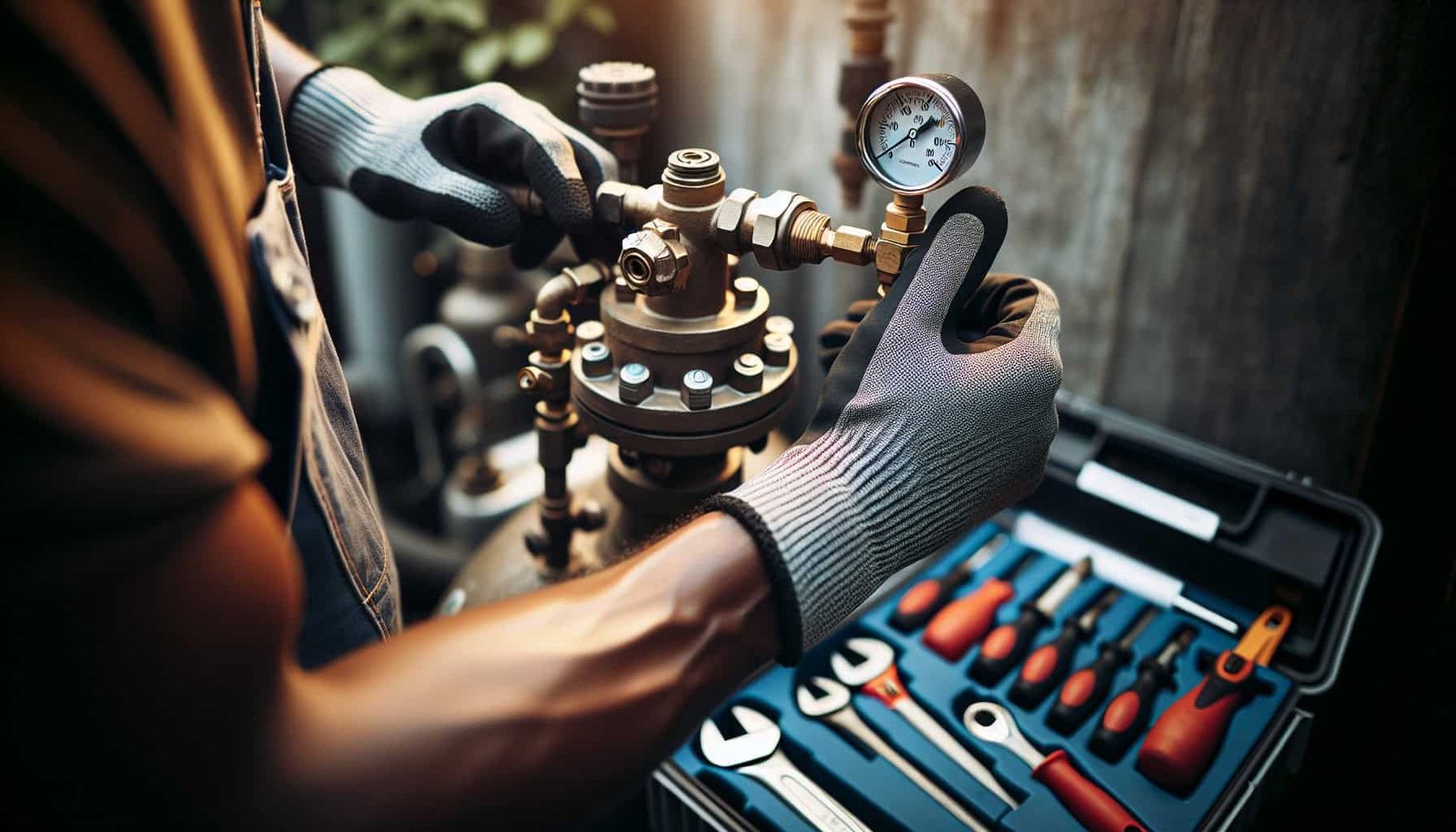Maintaining the safety of your well water during pressure tank maintenance is crucial to ensure the health and well-being of you and your family. But how exactly can you achieve this? In this article, we will explore some essential tips and guidelines on how to effectively maintain the safety of your well water during pressure tank maintenance procedures. By following these recommendations, you can have peace of mind knowing that your well water remains clean and safe for everyday use.
Preparing for Well Water Pressure Tank Maintenance
Before you begin any maintenance procedures on your well water pressure tank, it’s important to take some necessary precautions to ensure your safety and the quality of your well water.
Shutting off the power supply
To start, locate and shut off the power supply to your well pump. This step is crucial to prevent any accidents or electric shocks while working on the pressure tank.
Turning off the well pump
After you have safely turned off the power supply, you should proceed to turn off the well pump. This can usually be done by using the pressure switch. By turning off the pump, you minimize the risk of water flowing into the tank and causing potential hazards during maintenance.
Relieving pressure from the system
Before you can begin any maintenance work on the pressure tank, it is essential to relieve the pressure from the system. This can be done by opening a faucet or a valve downstream from the tank. The goal is to reduce the pressure to a safe level to ensure a smooth and safe maintenance process.
Wearing appropriate protective gear
Lastly, make sure to wear appropriate protective gear to safeguard yourself during the maintenance procedures. This may include gloves, eye protection, and any other necessary safety equipment. By taking this step, you can prevent potential injuries and ensure a safe working environment.
Protecting Well Water Quality
During well water pressure tank maintenance, it is crucial to pay attention to the well water quality to prevent any contamination or adverse effects.
Ensuring well water is disinfected
Before starting any maintenance work, ensure that your well water is properly disinfected. This can be done by adding an appropriate amount of chlorine or other disinfectants recommended for well water treatment. Disinfecting the water helps prevent the growth and spread of harmful bacteria or pathogens during the maintenance process.
Using caution with chemicals
When using chemicals during maintenance, whether for cleaning or disinfection purposes, it is essential to exercise caution. Follow the instructions provided with the chemicals and avoid using excessive amounts that could potentially harm the well water quality. Additionally, make sure to choose chemicals that are safe for use with well water and avoid any that may cause contamination or adverse reactions.
Avoiding contamination through equipment
One potential source of contamination during well water pressure tank maintenance is using contaminated equipment. Before using any tools or equipment, ensure they are clean and free from any dirt, debris, or chemicals that could contaminate the well water. Regularly cleaning your maintenance equipment helps maintain the integrity of your well water supply.
Properly disposing of maintenance waste
After completing maintenance procedures, it is important to dispose of any maintenance waste safely. This includes any chemicals used, spent filters, or other debris. Follow local regulations and guidelines for proper disposal to protect the environment and prevent contamination of water sources.

Maintaining Well Water Pressure Tank
Proper maintenance of your well water pressure tank is essential to ensure its longevity and optimal performance. Here are some key steps to include in your maintenance routine.
Inspecting the pressure tank
Regular inspections of the pressure tank are essential to detect any signs of wear, damage, or leaks. Check for rust, corrosion, or any visible issues on the tank’s exterior. Additionally, inspect the pressure switch, gauge, and any other components for any abnormalities or potential problems.
Cleaning the pressure tank
Over time, sediment and mineral deposits can accumulate inside the pressure tank, affecting its efficiency and overall performance. Regular cleaning helps remove these deposits and keeps the tank functioning properly. Follow the manufacturer’s guidelines when cleaning the tank to avoid causing any damage.
Flushing the tank
Flushing the tank periodically helps remove stagnant water and reduces the risk of bacterial growth. By draining and refilling the tank, you prevent the buildup of sediments and ensure a fresh water supply. Make sure to use proper safety measures when draining the tank and avoid any potential contamination during the process.
Checking for water quality issues
During maintenance, it’s crucial to check the quality of the well water to ensure it meets the necessary standards. Look for any signs of discoloration, odor, or unusual taste. If you notice any issues, it may indicate a problem with the well water source or the pressure tank itself.
Replacing faulty components
If you discover any faulty components during the inspection or maintenance process, it is important to replace them promptly. Faulty components can compromise the performance of the pressure tank, leading to decreased water pressure or potential system failures.
Handling Contaminated Water
In the event of water spills or leaks during maintenance procedures, it is important to properly manage and contain the contaminated water.
Managing water spills or leaks
Accidental water spills or leaks can happen during well water pressure tank maintenance. In such situations, it is important to act promptly to minimize the spread of contaminated water. Immediately stop the source of the leak and contain the spilled water using appropriate methods.
Using absorbents for water cleanup
If water spills or leaks occur, using absorbents such as towels, rags, or absorbent pads can help contain and clean up the water. Properly dispose of the used absorbents following the disposal guidelines to prevent any further contamination.
Properly disposing of contaminated water
Contaminated water from spills or leaks should be disposed of in accordance with local regulations. Depending on the level of contamination, the water may need to be treated or taken to a licensed facility for proper disposal. Avoid letting contaminated water enter drainage systems or natural water sources to prevent environmental damage.
Contacting professionals in case of major contamination
In the event of significant water contamination during maintenance procedures, it is important to contact professionals who specialize in hazardous waste cleanup. They have the expertise and equipment necessary to handle major contamination incidents safely and effectively.

Avoiding Cross-Contamination during Maintenance
Cross-contamination can occur during maintenance procedures if proper precautions are not taken. It is essential to take steps to minimize the risk of introducing external contaminants into your well water system.
Labeling and separating tools and equipment
To avoid confusion and potential cross-contamination, label your tools and equipment specifically for use with your well water system. Keep them separate from general use tools to prevent accidental mixing or contamination.
Using disposable or dedicated cleaning tools
Whenever possible, use disposable or dedicated cleaning tools for maintenance procedures. Avoid reusing tools or equipment that may have come into contact with contaminants. By using disposable tools, you minimize the risk of cross-contamination between different areas.
Avoiding contact with external contaminants
During maintenance, be mindful of potential external contaminants that could come into contact with your well water system. These may include dirt, chemicals, or other pollutants. Take precautionary measures to minimize contact and prevent contamination from occurring.
Practicing proper hygiene
Maintaining good personal hygiene is essential during well water pressure tank maintenance. Wash your hands thoroughly before and after handling any components or tools to prevent the spread of contaminants. This simple step helps protect both your own health and the quality of your well water.
Monitoring Well Water Quality
Regular monitoring of the well water quality is crucial to ensure your well water supply remains safe and clean. By monitoring consistently, you can detect any changes or issues in a timely manner.
Regular water testing
Periodically testing your well water helps identify any potential issues or changes in water quality. This can include testing for pH levels, contaminants, or other parameters specific to your region. Professional water testing services can provide more detailed information and ensure accurate results.
Checking water odor and appearance
Visual inspection of the well water can also provide valuable information about its quality. Look out for any changes in odor, appearance, or taste. Any unusual smells or discoloration may indicate a problem that needs attention.
Keeping a log of water quality parameters
Maintaining a log of water quality parameters is a proactive way to monitor your well water supply. Record the results of regular testing, including measurements of various parameters. By tracking these parameters over time, you can identify trends or patterns that may require further investigation.
Noticing changes in water pressure or flow
Changes in water pressure or flow can be indicative of a problem with your well water system. Stay alert to any noticeable decreases in pressure, sporadic flow, or fluctuations that are not typical. If you observe such changes, it may be necessary to investigate further or seek professional assistance.

Ensuring Safe Well Water Supply
To ensure a safe well water supply, ongoing maintenance is essential. Here are some additional measures to consider.
Maintaining well caps and seals
Regularly inspect and maintain the well caps and seals to ensure they are in good condition. Well caps and seals help prevent contaminants from entering the well, safeguarding the quality of your well water. Replace any damaged or deteriorated caps or seals promptly.
Protecting the wellhead from debris
Keep the area around the wellhead clean and free from debris. Clear away leaves, dirt, or other materials that may accumulate near the well. This helps prevent potential contaminants from entering the well and protects the overall integrity of your well water system.
Preventing unauthorized access to the well
Ensure that your well is properly secured to prevent unauthorized access. This helps protect the well water from intentional or accidental contamination. Use appropriate barriers or locks to restrict access and regularly inspect the well area to ensure the security measures remain in place.
Monitoring well casing integrity
Regularly inspect the well casing for any signs of damage or deterioration. The well casing acts as a protective barrier, preventing contaminants from entering the well. If you notice any issues with the casing, such as cracks or leaks, take prompt action to repair or replace it.
Well Water Pressure Tank Maintenance Schedule
Creating a well water pressure tank maintenance schedule is an effective way to ensure the longevity and optimal functioning of your well water system.
Determining frequency of maintenance
The frequency of maintenance will depend on various factors, including the specific well water system, water quality, and local regulations. Review manufacturer guidelines and consult with professionals to determine the appropriate maintenance schedule for your well water pressure tank.
Considering local regulations and guidelines
Be aware of any local regulations or guidelines that may govern well water system maintenance. Familiarize yourself with any mandatory inspections or requirements that need to be followed. Complying with these regulations helps ensure your well water system remains in safe and proper working condition.
Creating a maintenance checklist
Developing a maintenance checklist specific to your well water pressure tank helps ensure comprehensive and consistent maintenance procedures. Include tasks such as inspections, cleaning, and testing. Regularly review and update the checklist to adapt to any changes or specific requirements.
Scheduling professional inspections
In addition to regular maintenance tasks, it is advisable to schedule professional inspections periodically. Professionals can provide a more in-depth assessment of your well water system, identify potential issues, and offer expert advice. Consider scheduling professional inspections at least once a year or as recommended by experts.

Preventing Bacterial Growth
Bacterial growth in the well water system can pose significant health risks. Take preventive measures to minimize the risk of bacterial contamination.
Flushing stagnant water
Periodically flushing stagnant water from your well water system helps prevent the growth of bacteria. Stagnant water can provide an ideal environment for bacteria to thrive. Regularly running taps or faucets for a few minutes can help ensure a fresh water supply and disrupt any potential bacterial growth.
Periodic shock chlorination
Periodic shock chlorination is an effective method to eliminate bacteria and disinfect the well water system. Follow appropriate procedures and guidelines for shock chlorination, including proper dosage and duration. Be cautious when handling chlorine and ensure it is properly diluted to prevent adverse effects on well water quality.
Avoiding stagnant points
During maintenance, pay attention to any areas or components that may potentially create stagnant points. Stagnant water can promote bacterial growth. Consider the design and layout of your well water system to minimize the risk of stagnant points and ensure proper water circulation.
Protecting against biofilm formation
Biofilm, a slimy buildup of bacteria and other microorganisms, can form on the interior surfaces of the well water system. Regular cleaning and maintenance help prevent biofilm formation. Use appropriate cleaning methods and disinfectants recommended for biofilm control to maintain a clean and bacteria-free well water system.
Educating and Training Homeowners
Educating and training homeowners about well water safety is an essential step in maintaining a safe well water supply. Here are some measures you can take.
Proper installation and maintenance briefing
Provide homeowners with a thorough briefing on the proper installation and ongoing maintenance of their well water system. This includes explaining the importance of regular inspections, cleaning procedures, and other necessary tasks. Clear instructions and demonstrations help homeowners understand their responsibilities and the potential risks associated with their well water system.
Promoting awareness of well water safety
Raise awareness among homeowners about the importance of well water safety. This can be done through educational materials, community events, or online resources. Emphasize the potential risks associated with contaminated well water and the steps homeowners can take to protect and maintain a safe water supply.
Sharing resources for further information
Provide homeowners with resources for further information and guidance on well water safety. This may include websites, pamphlets, or contact information for local health authorities or professionals. By equipping homeowners with the necessary resources, they can access additional information and support as needed.
Encouraging professional assistance
Encourage homeowners to seek professional assistance when needed. Professionals with expertise in well water systems can provide valuable advice, inspections, and maintenance services. Emphasize the importance of timely professional intervention to address any potential problems or concerns.
In conclusion, maintaining well water safety during well water pressure tank maintenance procedures requires careful attention to various factors. By following proper safety measures, conducting regular maintenance tasks, and monitoring the well water quality, you can ensure a safe and reliable well water supply. Educating homeowners about their responsibilities and promoting awareness of well water safety further contributes to maintaining a healthy water source. Remember to adhere to local regulations and seek professional assistance when necessary to address any concerns effectively.


